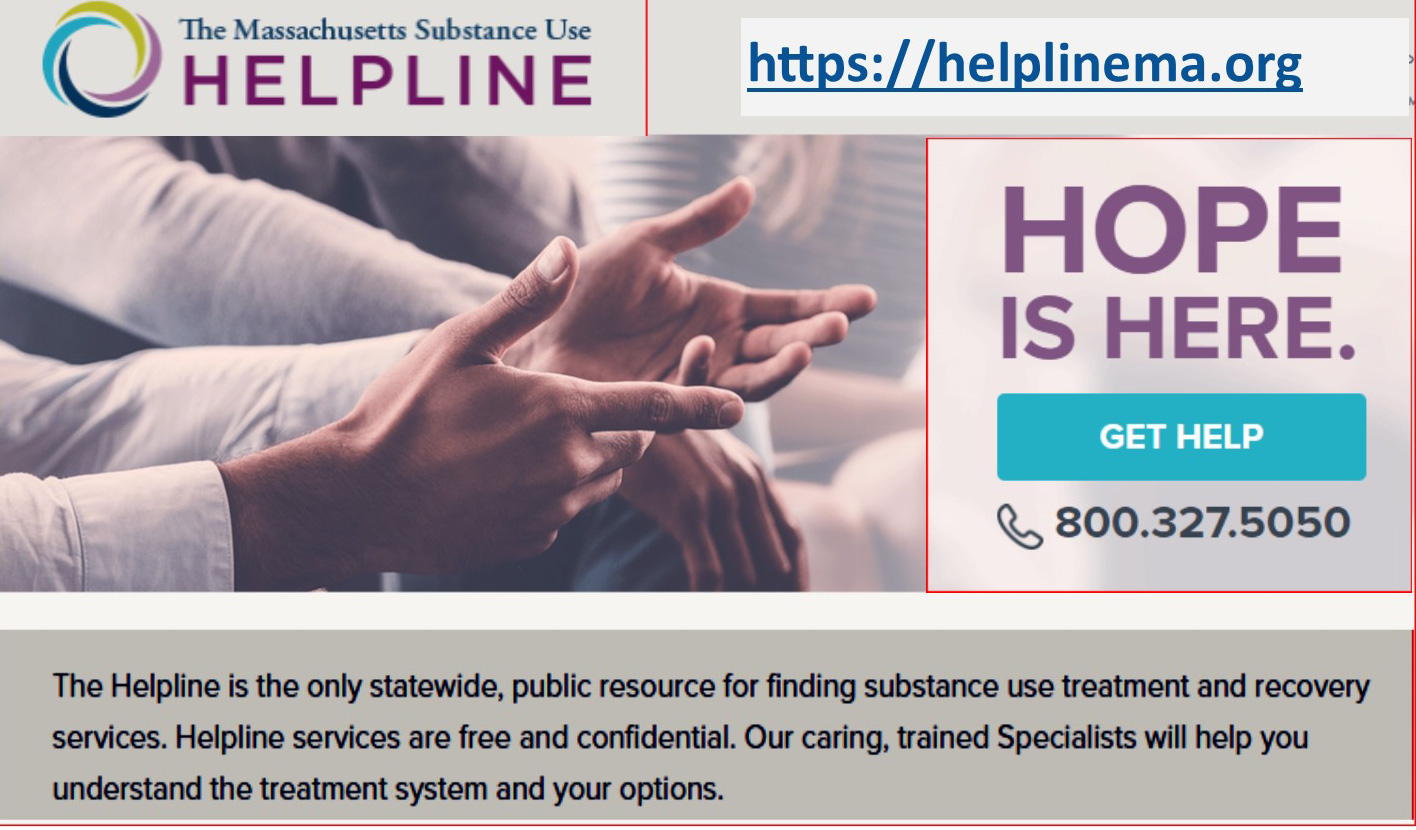Medically Assisted Treatment (MAT)
for Substance Use Disorders
Do you know what Medically Assisted Treatment (MAT) is?
Have you heard about First Responders
saving lives of people who overdose on narcontics with Narcan? This is a
form of Naltrexone, an opiate receptor binder and blocker, at the
nucleus accumbens pleasure site. Naltrexone is a type of Medically Assisted Treatment (MAT) necessary for successful recovery from a Substance Use Disorder (SUD).
Naltrexone, Subutex, Methadone: Opioid Receptor Binder & Blockers
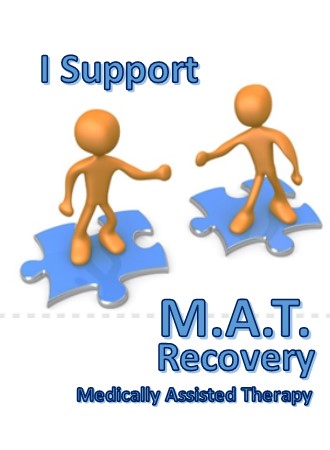
SAMHSA and MAT Changes our Approach to SUD Treatment
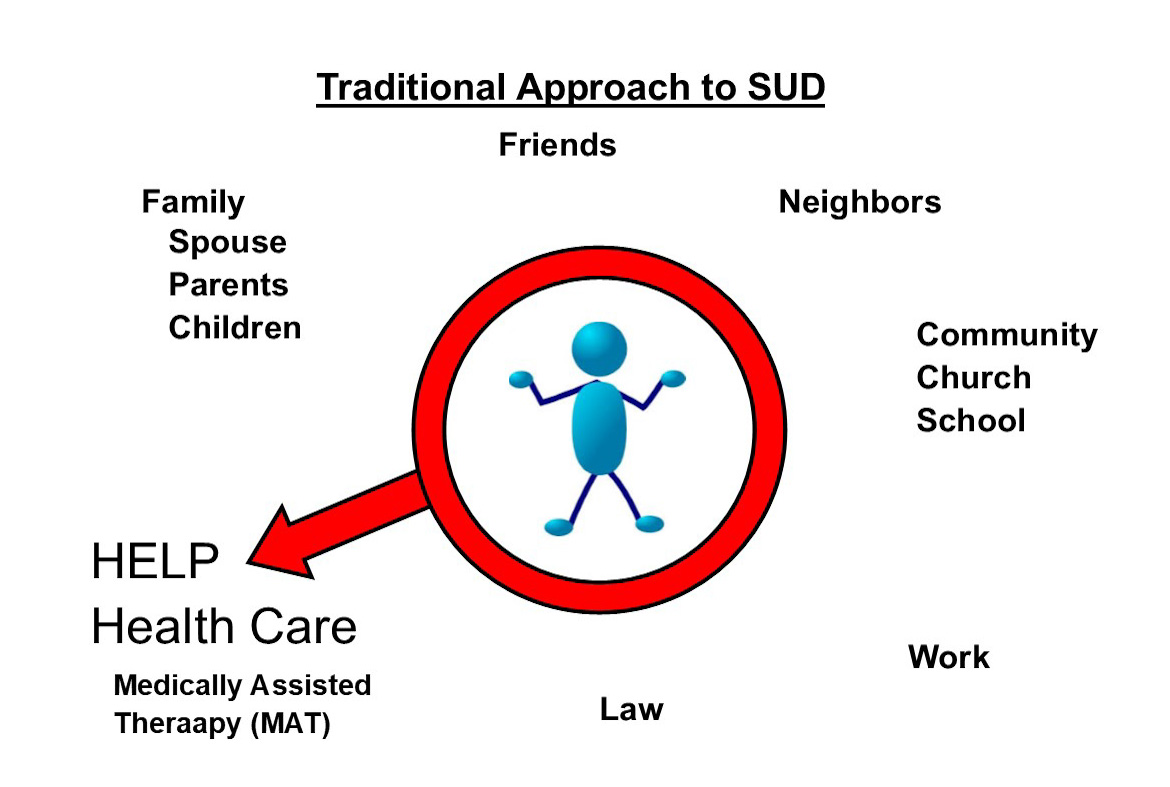
Current treatment for a person with a Substance Use Disorder could be characterized as “Go fix yourself, and then come back!”. Substance use creates all kinds of negative behaviors, which cause problems for others and lead to rejection and isolation. “Getting help” is often an individual task, which others are not usually involved with. Old prejudices and stigma about the disorder further worsen the situation. Laws have been punitive and filled our courts and jails, instead of “Getting help”. Obtaining a prescription for necessary therapeutic medications (MAT) has been highly restricted. Help for families does occur, largely on an individual basis or in selfhelp groups (Nar-Anon).
Treatment in “isolation” is not effective or successful. The epidemic of opioid use continues to increase, despite this treatment model.
Overdose is not the only way to lose someone with a SUD
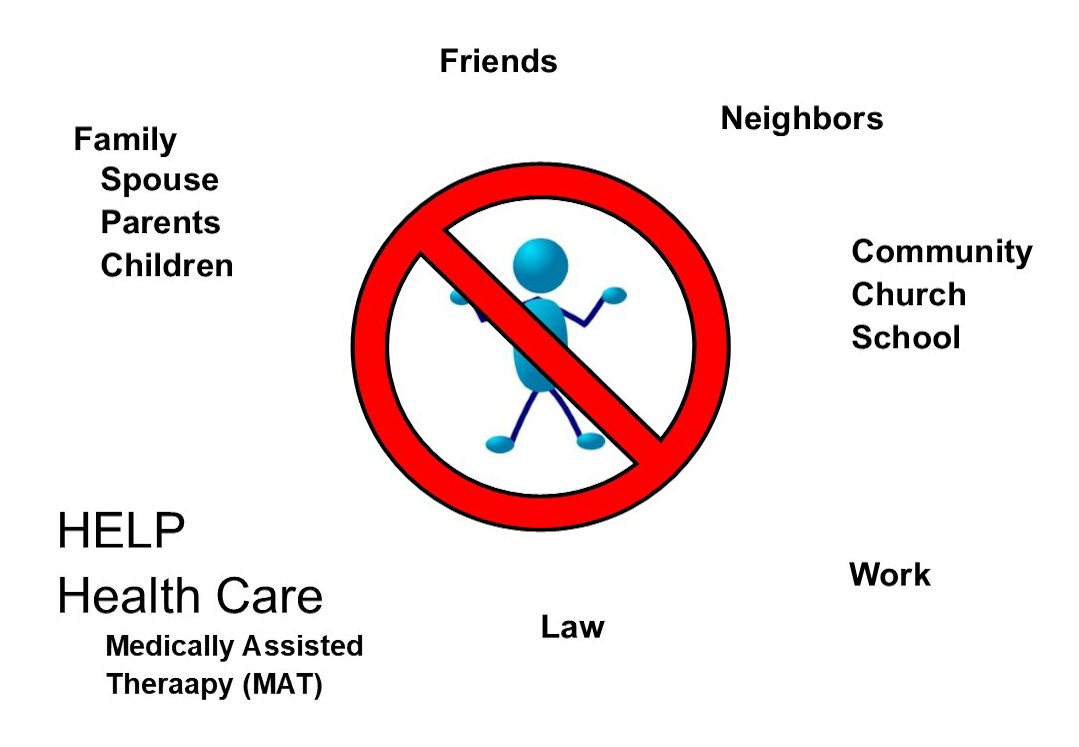
Death by overdose is only one way that the SUD is lost. Treatment refusal or failure(s) often lead to rejection from family or loss of employment. Getting help in isolation is equally devastating, as often inpatient hospitalization or lengthy residential treatment require a person to be away and removed from their connected world.
Death by overdose is a statistic which as been targeted for intervention, successfully. Narcan in the hands of first responders or others has reduced this number remarkably. This has not reduced the opioid SUD epidemic, only the deaths from overdose. Treatment continues to lag behind for SUD. (This statistic has also been reduced by not including suicides as an OD.)
NEW Attitudes for SUD Treatment
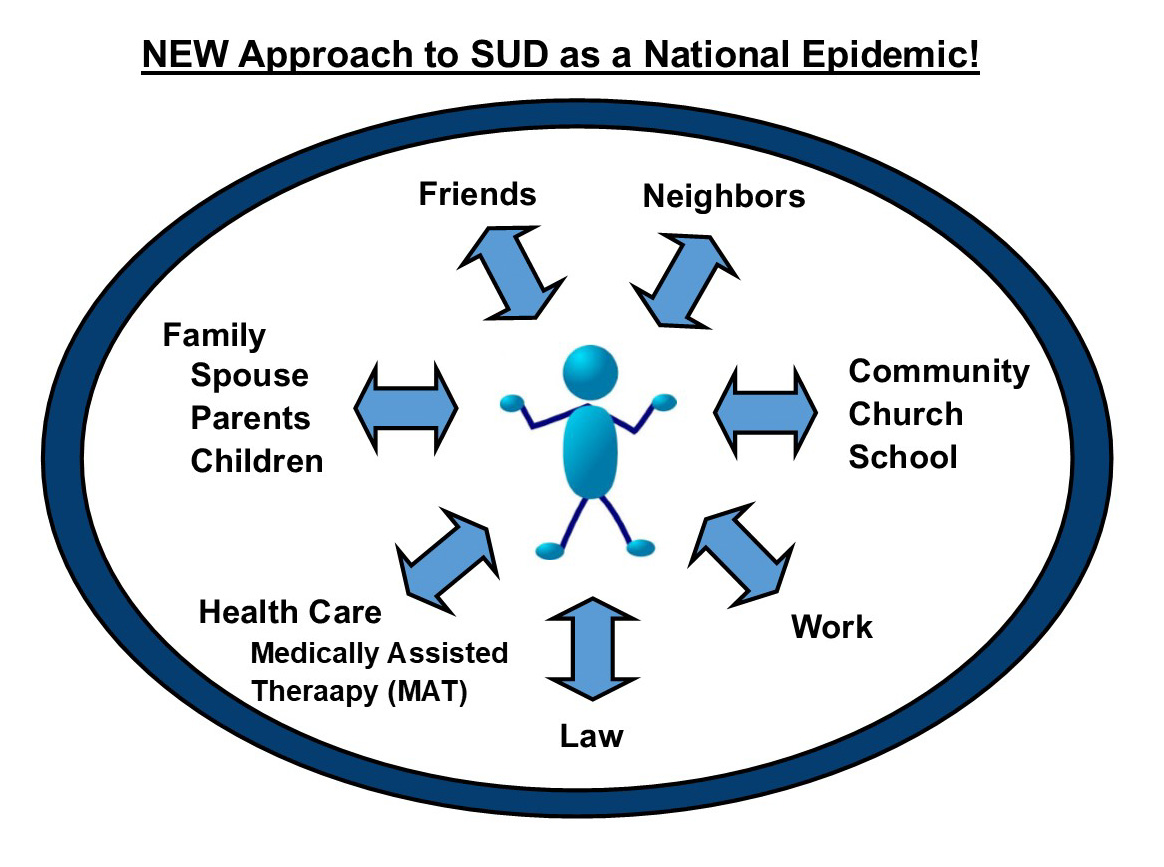
The Opioid SUD epidemic is receiving the attention of researchers, practitioners, legislators, and people in recovery. This is happening on a Federal, State, and local (Town of Weymouth) level. SAMHSA is the federal agency leading the research, policy development, program guidelines, funding, and overall mission to address the epidemic.
The NEW treatment approach involves ALL of us, especially since the epidemic will touch all of us! We must shift our attitudes and become actively involved with recovery from this disease epidemic. Public health responses to this public risk are called for. Mass state law and federal law have changed to promote this treatment strategy. Opioid Treatment Centers (OTC’s) are now functioning. Spectrum and Project Turnabout, South Bay, and Square Medical are located in Weymouth. Clean Slate is in Plymouth. Native American treatment facilities are also currently available.
This is a huge task to encourage this change!
SUD Is a Physical Disorder!
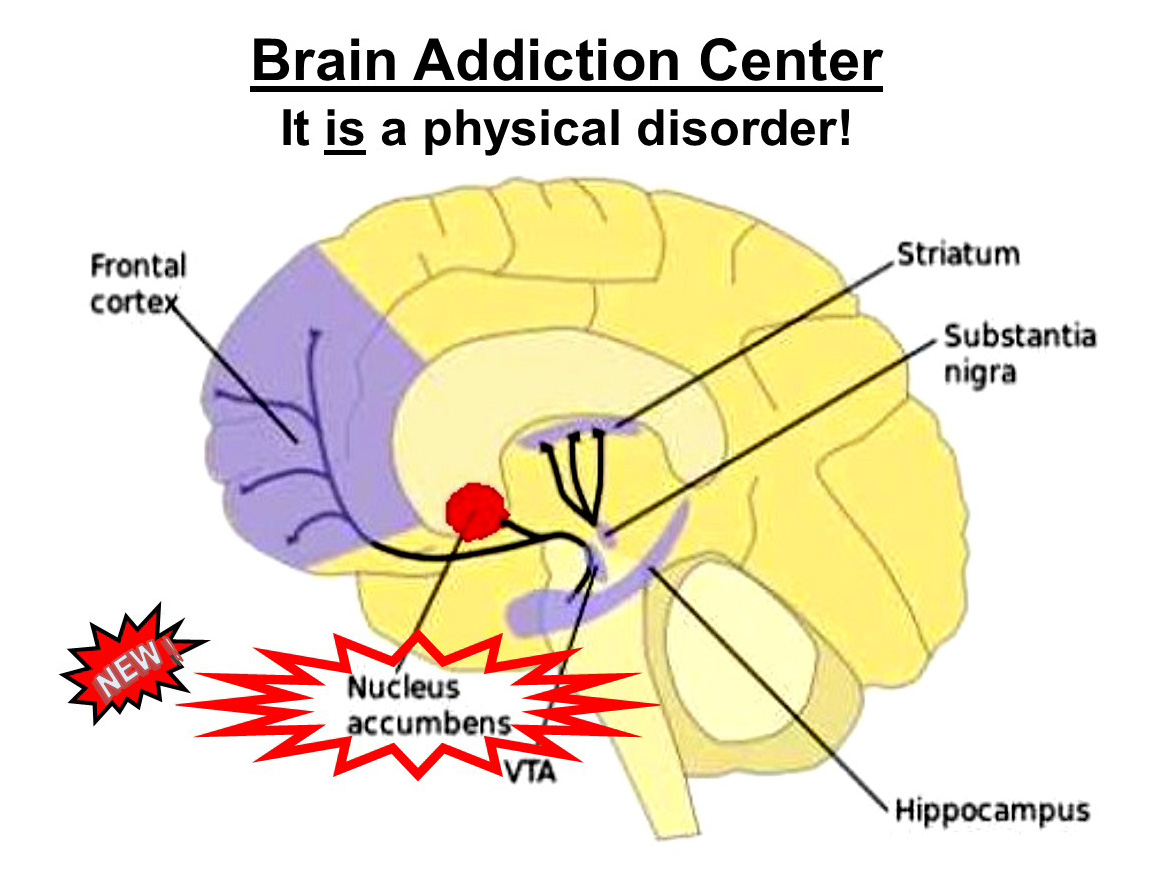
The location of the pleasure center in our brains has been identified. This addiction center is the focus of understanding what an opioid addicition is, and what is necessary medically to assist treatment and improve recovery success for ALL of us.
Addiction Re-defined by MAT Recovery
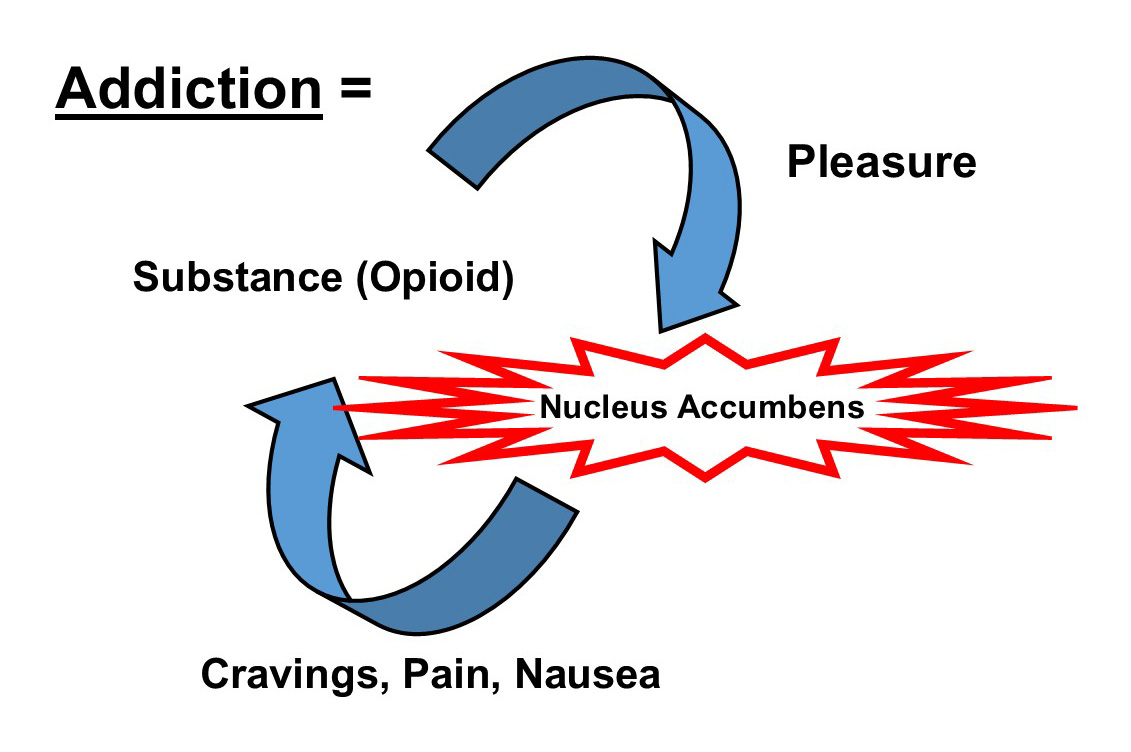
SUD is associated with changes in our Nucleus Accumbens. This brain center releases powerful chemicals which cause intense cravings, pain, and nausea—all designed to cause the person to obtain and deliver more opioid. This change is probably permanent.
MAT: Medically Assisted Treatment for SUD Recovery Success
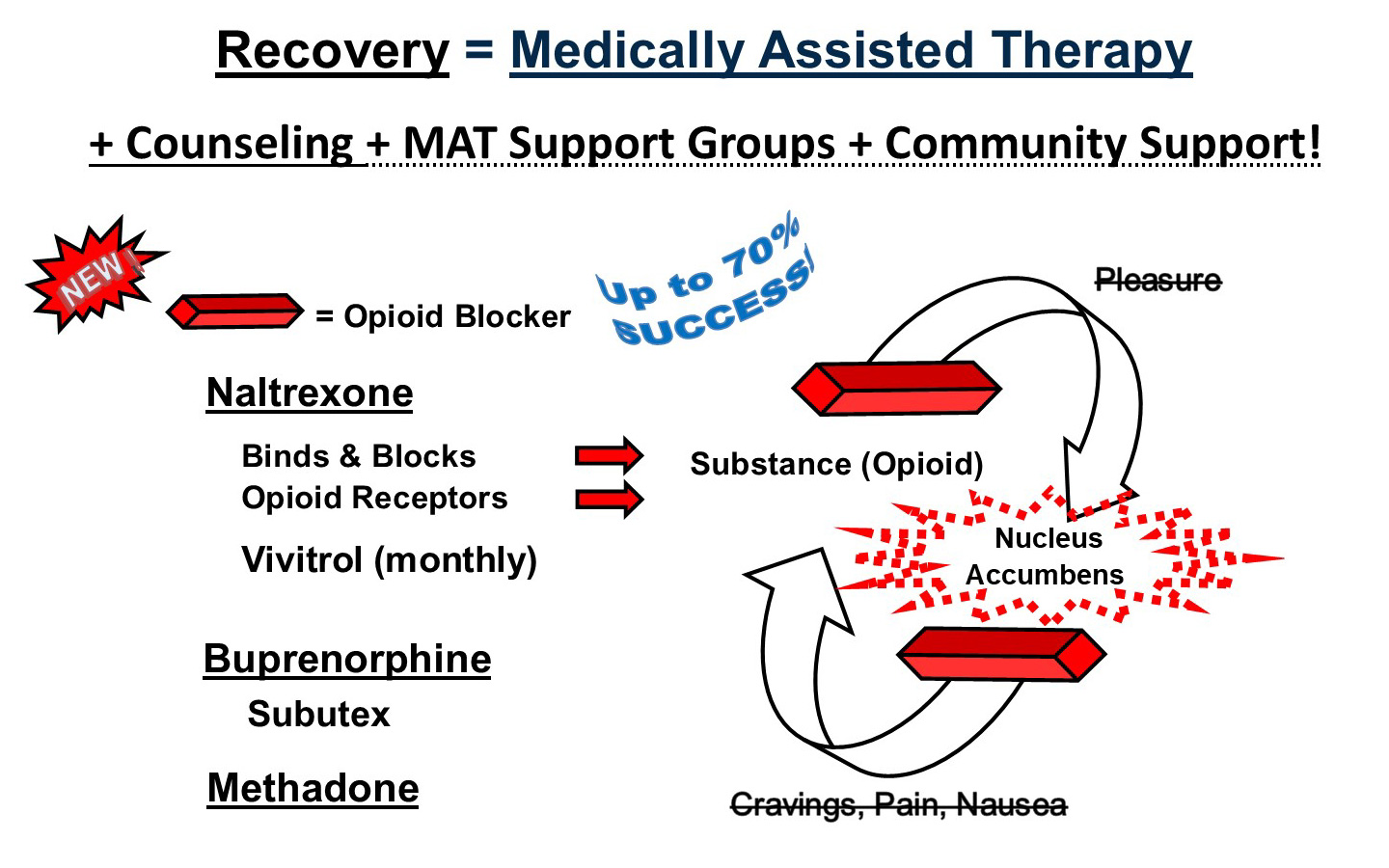
Accepting MAT as medically necessary for treatment & recovery from SUD is a big obstacle to our public health response to this epidemic!
Attitudes toward Methadone and Suboxone are generally negative (even within the recovery community). People in recovery assisted by medical therapy tend to be viewed as “still an active addict”.
Narcan may be the opening to changing our national attitudes! Narcan has been demonstrated to be effective—dramatically! It would be hard to find someone that opposes the use of Narcan to save lives.
Narcan is a type of Naltrexone! This medical intervention delivers the same opioid binder and blocker on a daily basis. Cravings (which cause the greatest number of relapses) are greatly reduced. This plus comprehensive treatment allows the person in recovery to be up to 70% effective (in contrast to the 5% recovery rate without MAT).
Side effects are minimal. There is no “high”. We ALL need to welcome and endorse MAT, as part of our response to this epidemic
Opioid Use Problem?
